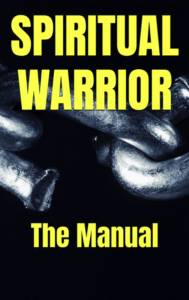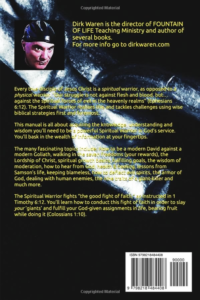Prayer — The Basics
Prayer simply means communion with God. It’s talking with your Creator. Jesus’ disciples asked him how to pray and this was his response:
“This then is how you should pray:
Our Father in heaven,
hallowed be your name,
your kingdom come, your will be done on earth as it is in heaven.
Give us today our daily bread.
Forgive us our debts, as we also have forgiven our debtors.
And lead us not into temptation, but deliver us from the evil one.
For yours is the kingdom and the power and the glory forever. Amen”
Matthew 6:9-13
This is typically referred to as “the Lord’s prayer” and people sometimes pray it word-for-word, particularly when the occasion calls for a ritualistic or brief prayer to open or close ceremonies. This is fine, but it’s really not a prayer to be spoken by rote. “The Lord’s prayer” is actually an outline of different types of prayer. It’s a prayer skeleton that needs to be filled in with the “flesh” of our spontaneous prayers according to our unique expressions, communion, needs or desires and the specific people and situations touching us. The outline can be broken down as such:
- “Our Father in heaven” = Communion or fellowship with God.
- “Hallowed be your name” = Praise & worship.
- “Your kingdom come, your will be done on earth as it is in heaven” = Binding & loosing or intercession, that is, releasing God’s will and kingdom into people’s lives and situations on earth, including your own.
- “Give us today our daily bread” = Petition, that is, praying for your needs and righteous desires.
- “Forgive us our debts as we also have forgiven our debtors” = Repentance, venting, and forgiveness where applicable.
- “And lead us not into temptation, but deliver us from the evil one” = Armoring up, protection, watchfulness, speaking in faith, and deliverance.
- “For yours is the kingdom and the power and the glory forever. Amen” = Return to praise and close.
As you can see, each part of “the Lord’s Prayer” refers to a specific type of prayer. Let’s look at four of them a little closer:
“Our Father in heaven”
This refers to communion with God since the believer is addressing God as his or her “Father.” ‘Father’ indicates familial relationship and relationship requires communication, hence fellowship. Christianity at its core is a relationship with the Creator of the universe, which is why the gospel is referred to as the message of reconciliation in 2 Corinthians 5:18-20. I encourage all believers to cultivate an intimate relationship with their heavenly Father where you’re in constant communion throughout the day, even when you’re in bed. Paul referred to this as “praying without ceasing” (1 Thessalonians 5:17 KJV) and the “fellowship of the Holy Spirit” (2 Corinthians 13:14).
Please notice, by the way, that Jesus instructed us to pray to the Father, not to him (Matthew 6:9). Praying to the Father in the name of Jesus is prayer protocol (John 16:23).
“Hallowed be your name”
This type of prayer refers to praise & worship. To ‘hallow’ means to honor as holy and venerate, that is, treat with respect and reverence. God’s name represents the Creator Himself so we are to hallow the Great “I Am.” The only way you can accomplish this in prayer is by telling him. Praise is celebration and includes thanksgiving, raving and boasting, whereas worship is adoration. Praise naturally attracts God’s presence and is in accordance with the law of respect: What you respect moves toward you while what you don’t respect moves away from you. Worship, on the other hand, is adoration or awe, and is the response to being in his presence. See Psalm 95:1-7 and Psalm 100 for verification.
We could further differentiate praise & worship as such:
- Praise celebrates God whereas worship humbly reveres him.
- Praise lifts God up while worship bows when he is lifted.
- Praise dances before God whereas worship pulls off his shoes.
- Praise extols God for what he’s done while worship adores him for who he is.
- Praise says “Praise the Lord” whereas worship demonstrates that he is Lord.
- Praise is thanksgiving for being a co-heir in Christ while worship lays the crown at His feet.
Every believer is called to deeper praise & worship. It will literally revolutionize your life, as it has mine and continues to do so.
“Your kingdom come, your will be done on earth as it is in heaven.”
This type of prayer is not talking about praying for Jesus’ return and the set-up of his eternal kingdom on earth, whether in the Millennium or eternally, it’s talking about the principle of binding & loosing in this “present evil age.” This means now. Do you want God’s kingdom to reign in your life and the lives of others? You have to release it through prayer. Do you want God’s will to be done in your life and the lives of others? You have to loose it via prayer. In other words, God’s kingdom will not come and reign on this earth unless a believer releases it through prayer and action; and God’s will is not done on earth unless the church looses his will via prayer and action. Simply put, believers have the power to bind the kingdom of darkness and loose the kingdom of light. See Matthew 16:19 & 18:18-19. The principle of binding & loosing is covered in detail in the article Spiritual Warfare — The Basics.
“Forgive us our debts, as we also have forgiven our debtors.”
When in prayer believers need to be honest and transparent with their Creator. He knows everything anyway so you might as well be transparent. Cultivate and maintain a humble, pliable heart that’s open to correction. We need to always be willing to search our hearts – our attitudes, motives and actions – and make adjustments where necessary. Never put off repentance; make it a priority. This keeps our spiritual arteries clear and life flowing, whereas unconfessed sin will clog them up and block God’s power. Humility attracts God’s favor and he forgives the repentant.
Similarly, we need to extend grace to those who sin against us and humbly repent. That’s what this type of prayer refers to: forgiving those we should forgive. It shouldn’t be misinterpreted to mean we’re obligated to forgive everyone for everything all the time, no conditions whatsoever, because Jesus didn’t teach this and the Bible doesn’t support it. Take, for instance, the unrepentant brother in Jesus’ illustration from Matthew 18:15-17. Since the man refused to repent Jesus instructed that his sin should be held against him. He was to be defellowshipped and regarded as a non-believer until he repents. Paul dealt with a real-life situation like this and instructed the Corinthians to do the same (1 Corinthians 5:1-5). Thankfully, the man later repented and therefore Paul encouraged the believers to warmly welcome him back into their fellowship (2 Corinthians 2:6-11). Luke 17:3-4 is another example. See my book The Believer’s Guide to FORGIVENESS & WARFARE for important details on this topic, available here (both print and eBook versions)
Closing Word & Blessing
The other types of prayer from Jesus’ outline of prayer are self-explanatory and I encourage you to practice and develop in each area.
God Bless You as You Seek & Serve!
This article is available in book form (with way more detail) as chapter 18 of…
- The print book is available here for only $12.50 (303 pages)
- The Kindle eBook is available here for just 99¢!
Both links allow you to “look inside” the book.
Related Topics:
Prayer — Communing with God (scroll down to the section “Communing with God” since the first part is an abridged repeat of this article)
Support for PRAISE & WORSHIP in the Bible
comments powered by Disqus






